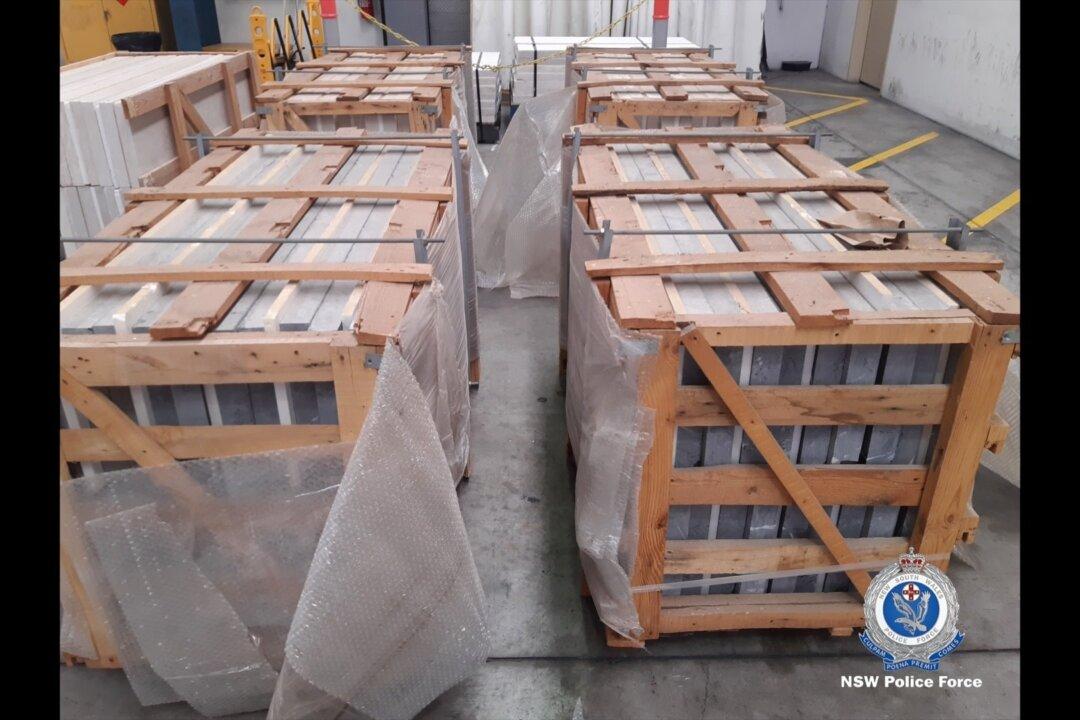Australian police have uncovered a massive haul of the illegal drug “ice” at a Sydney port, worth A$1.6 billion (US$1.1 billion) on the street, the most significant detection of its kind in the country.
Australian Border Police in July examined a number of sea cargo containers that arrived at Port Botany in Sydney.




